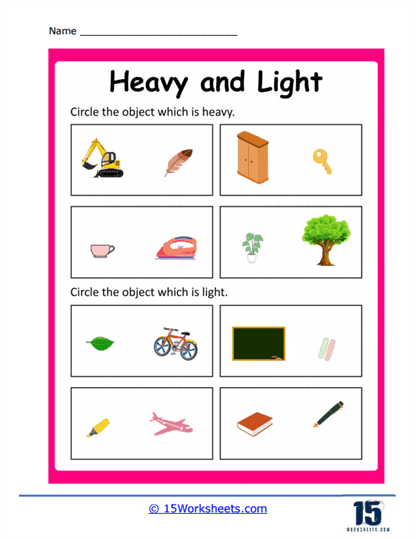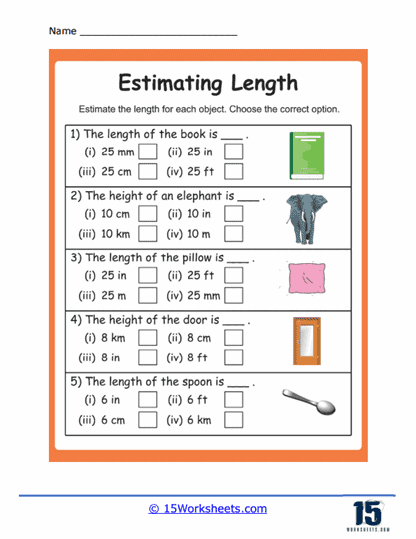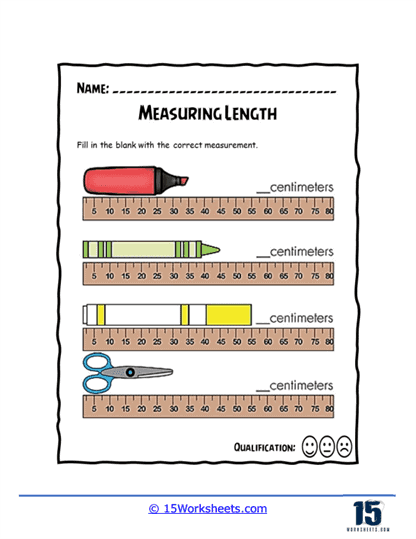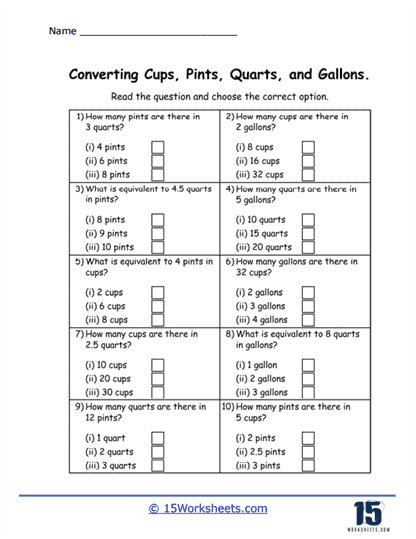Measurement Worksheets
About Our Measurement Worksheets
These worksheets will help students become proficient in measuring and comparing the volume of different objects and containers, a fundamental skill in both mathematics and practical daily life.
Comparing Measurements Worksheets
This series of free worksheets covers a range of exercises to help students understand how to compare the measurement of objects in different contexts, including weight, size, and length. With clear instructions and creative illustrations, these worksheets offer ample practice to help students master this basic math skill and develop their understanding of measurement concepts.
Comparing Temperatures Worksheets
These worksheets are useful for developing students’ skills in temperature measurement and comparison, which is essential for understanding weather, climate, and various scientific and everyday contexts.
They help students understand that estimation is a practical skill used in daily life when precise measurements are not always possible or necessary.
The visual representation of Gallon Man simplifies the understanding of unit conversions and provides a memorable way for students to remember how these units relate to each other in the customary U.S. measurement system.
Graduated Cylinders Worksheets
They help students become proficient in using graduated cylinders to measure and record the volume of liquids with precision, which is a fundamental skill in scientific research and experimentation.
These worksheets can be used in the classroom to reinforce mathematical concepts related to volume and in science classes to teach students how to calculate and apply volume measurements in various contexts.
They help students become proficient in using inches as a unit of length and using rulers to measure objects accurately.
They help students become more comfortable with measuring objects or distances accurately, which is a crucial skill in mathematics, science, and various everyday activities.
They help students improve their ability to measure liquid volumes accurately, a skill that is important in various scientific experiments, cooking, and everyday activities.
Reading Balances and Scales Worksheets
Reading balances and scales worksheets are essential tools for teaching measurement skills and concepts related to mass and weight.
Through a variety of exercises, students understand how to read and interpret rulers and different units of measurements. With a focus on the units of measurements inches and centimeters, these worksheets help students develop their measurement skills and gain a deeper understanding of measurement units and concepts.
Reading Tape Measures Worksheets
Reading tape measures worksheets are valuable tools for teaching measurement skills, spatial awareness, and practical applications of length measurement.
The Best Ways to Teach Measurement
Teaching measurement can be made more engaging and effective by using a range of strategies and resources that cater to different learning styles. Here are some best practices for teaching measurement.
- Start with the basics: Begin by introducing the basic units of measurement, such as length, weight, and volume, and their respective measuring tools. Use concrete examples and visuals to demonstrate how to use each tool.
- Use real-world examples: Use real-world scenarios and objects to help students understand how measurements are used in everyday life. For example, you could measure the length of a classroom, the weight of a book, or the volume of a container.
- Hands-on learning: Incorporate hands-on activities, such as measuring objects, estimating measurements, and converting between different units, to reinforce understanding and develop practical skills.
- Use technology: Utilize digital tools, such as interactive whiteboards, measurement apps, and online simulations, to enhance learning and provide engaging visual aids.
- Differentiate instruction: Recognize that students have varying learning styles and provide differentiated instruction to cater to their needs. Offer a range of activities, including visual, auditory, and kinesthetic options, to help students understand and retain the information.
- Include games and puzzles: Incorporate games and puzzles, such as measuring scavenger hunts, measurement bingo, or measurement jigsaw puzzles, to make learning fun and engaging.
- Use measurement vocabulary: Use measurement vocabulary consistently and explicitly, such as inches, feet, centimeters, and meters, to help students develop fluency and build a strong foundation for more advanced concepts.
- Encourage estimation: Encourage students to estimate measurements, such as the length of a table or the weight of a book, as a way to build their understanding of measurement concepts and develop their problem-solving skills.
- Provide feedback: Provide regular feedback to students on their progress and offer opportunities for reflection and self-assessment.
By incorporating these strategies and resources, you can help students develop a solid understanding of measurement concepts, build practical skills, and develop a positive attitude toward learning about measurement.


























